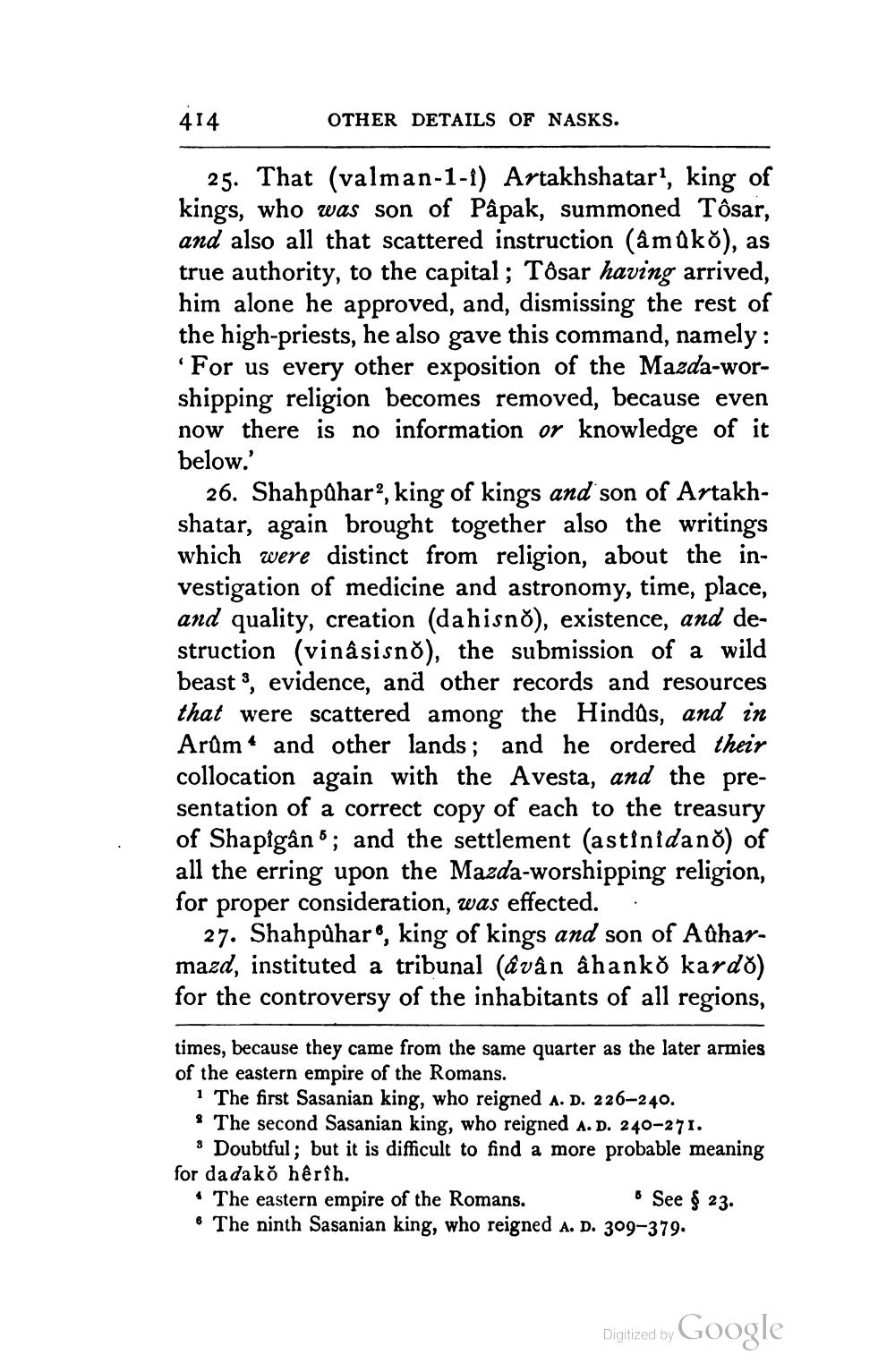________________
414
OTHER DETAILS OF NASKS.
25. That (valman-1-1) Artakhshatar, king of kings, who was son of Pâpak, summoned Tõsar, and also all that scattered instruction (âmako), as true authority, to the capital ; Tôsar having arrived, him alone he approved, and, dismissing the rest of the high-priests, he also gave this command, namely: 'For us every other exposition of the Mazda-worshipping religion becomes removed, because even now there is no information or knowledge of it below.
26. Shahpahar?, king of kings and son of Artakhshatar, again brought together also the writings which were distinct from religion, about the investigation of medicine and astronomy, time, place, and quality, creation (dahisno), existence, and destruction (vinâsisno), the submission of a wild beast, evidence, and other records and resources that were scattered among the Hindus, and in Arům + and other lands; and he ordered their collocation again with the Avesta, and the presentation of a correct copy of each to the treasury of Shapigân •; and the settlement (astinidano) of all the erring upon the Mazda-worshipping religion, for proper consideration, was effected. ..
27. Shahpühar, king of kings and son of Adharmazd, instituted a tribunal (âvân âhanko kardo) for the controversy of the inhabitants of all regions,
times, because they came from the same quarter as the later armies of the eastern empire of the Romans.
1 The first Sasanian king, who reigned A. D. 226–240. ? The second Sasanian king, who reigned A. D. 240-271.
8 Doubtful; but it is difficult to find a more probable meaning for da dako hêrih. • The eastern empire of the Romans.
6 See § 23. 6 The ninth Sasanian king, who reigned A. D. 309-379.
Digitized by Google




